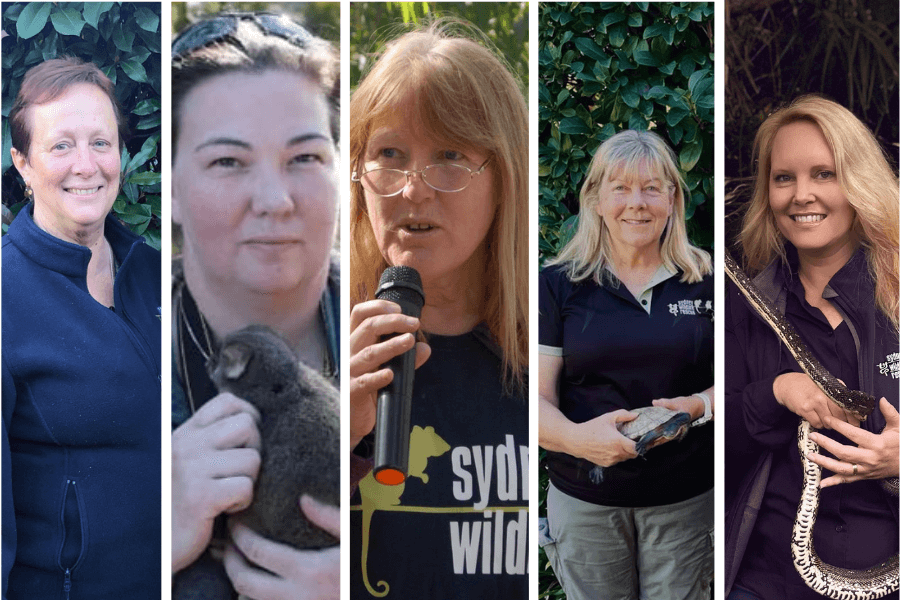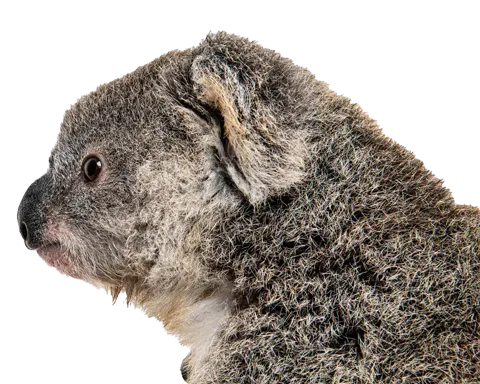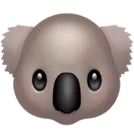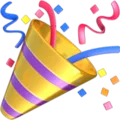
You might think volunteering with a family member would drive you batty, but that’s not the case with mother Fiona and her daughter Lauren who just love caring for bats.
Q: How long have you been Sydney Wildlife Rescue volunteers?
A: Fiona joined up 9 years ago in 2013 and Lauren became a member 3 years later in 2016, so we have combined experience of 15 years.
Q: Do you specialise in a particular species?
A: We started off rescuing and rehabilitating birds and possums, but in the last 5 years have had a focus on bats (specifically flying fox) rescue and rehabilitation.
Q: Are you involved in other Sydney Wildlife Rescue activities?
A: Fiona managed the Kukundi Flying Fox Creche in the Lane Cove National Park from to 2016 to 2019 and also manages Sydney Wildlife Rescue’s Global Giving Project ‘Helping Baby Bats Take Flight’. Lauren has been the Bat species coordinator for Northern Districts since 2022.
Q: Do you discuss anything apart from wildlife over breakfast, lunch and dinner and how do other members of your family cope with your passion for wildlife?
A: During the busier months of rehabilitating, our animals in care are almost all we talk about. Caring for flying foxes, both adults and pups is quite time consuming and there is always discussion between us about what the right treatment is or what we should be doing next to facilitate their recovery. Our family members tolerate (mostly) and support our focus on Australian wildlife and sometimes lend a hand at home with animals in care (other than flying foxes).
Q: Can you share an interesting recent rescue/rehab/release story?
A: 'Maggie' the 3-week-old flying fox pup. A call came in from a business in the Northern District who reported an adult flying fox on the ground. At the rescue we found a deceased adult female with a 3-week-old pup who was still alive. Mum had obviously been dead for a few days as she was covered in maggots and so too was the pup. The pup, ‘Maggie’, was taken home and we started the process of removing the maggots and basic first aid procedures, subcutaneous fluids, glucose and heat. The removal process continued over the next 3 days, removing them from various orifices and crevices as they continued to appear. 'Maggie' had wounds on her neck and in her wing pit, and for the first few weeks she was very touch and go. She slowly began to get her strength back and interact with the world, and before you know it, she was released 3 months later.
Q: What are the benefits of being a family team that would encourage others to enrol in our next Rescue & Care Course?
A: There are many benefits of being a family wildlife rescue and rehabilitative team. It’s always great being able to have an extra set of hands on a rescue, especially flying fox netting rescues, where one person holds the animal while the other cuts the animal out of the unsafe netting. Being in a family team also allows you to have an extra opinion available in real time, and most importantly allows you to have a real time support system that understands the emotions of the job but also share the physical load.
Bat rescue, rehabilitation and release requires specialised training, so if you’ve been inspired by Fiona and Lauren’s story and would like to begin your ‘Batwoman’ journey, please consider enrolling in our next Rescue & Care Course which starts on 4 June 2022:

There’s nothing more rewarding than raising the next generation of wildlife rescuers and Carla-Maree is doing exactly that with Bianca and EJ.
Q: How long have you been a Sydney Wildlife Rescue volunteer?
A: I have been a volunteer with Sydney Wildlife Rescue since 2019 and volunteered with another wildlife organisation for 6 years prior to this. My children Bianca & EJ have been involved with wildlife since they were a very young age, and I would engage them at every opportunity.
Q: Do you specialise in a particular species?
A: I don’t like to say I specialise in a particular species because I help all I can, but the majority of my rehabs are for Possums and Bats – whether Flying Fox or Microbat.
Q: Are you involved in other Sydney Wildlife Rescue activities?
A: I am currently the Brushtail, Ringtail, Microbat, Gliders and Fundraising coordinator for our South West Branch. I continually fundraise for the branch to help our members with anything they may need.
Q: Do you discuss anything apart from wildlife over breakfast, lunch and dinner and how do other members of your family cope with your passion for wildlife?
A: Sometimes it drives my mother crazy having a number of animals in care, but everyone in my family knows how passionate I am about wildlife and how I love doing what I do. We talk about wildlife regardless of the time of day in our household.
Q: Can you share an interesting recent rescue/rehab/release story?
A: Waterlogged Brushtail possum. I recently had a very waterlogged Brushtail possum in care from the extreme weather that I truly thought wouldn't make it. But after a couple of days on a drip to hydrate her and a couple of days of feeding her up, she made a full recovery and was able to go back to her habitat.
Q: What are the benefits of being a family team that would encourage others to enrol in our next Rescue & Care Course?
A: Being a family team for rescues/care means you not only get to spend time with your family, but you also get to bond over passions you have for wildlife bringing you a lot closer to one another. My kids are not old enough to join Sydney Wildlife Rescue yet, but they have always been a part of the rescues I bring home. I educate them and they get to see the stages of wildlife in care which in turn allows them to learn about what to do should you come across anything in need of help. My kids are very wildlife aware which is great to see because they are the next generation that will continue helping our wildlife. It's a great feeling when your kids are a part of what you do and love it just as much, if not more than you do.

They say, "if you want something done, ask a busy person", so full-time science teacher Deborah and her daughter Tahlia who is following in her ‘claw-steps’ and completing a degree in Wildlife Management while juggling work make a powerful team.
Q: How long have you been Sydney Wildlife Rescue volunteers?
A: Deborah joined in 2012 and Tahlia signed up when she turned 18 in 2016, so we have volunteered for a combined 16 years.
Q: Do you specialise in a particular species?
A: Not really, we do everything if it comes up in our area, though mainly birds. Deborah is the Granivore and Raptor coordinator for Northern Districts. Tahlia has snake and monitor catch and release training.
Q: Are you involved in other activities Sydney Wildlife Rescue activities?
A: Deborah is the Northern Districts Board representative as well as being on the Training Committee. Tahlia concentrates on rescues when she has time available from university and work.
Q: Do you discuss anything apart from wildlife over breakfast, lunch and dinner and how do other members of your family cope with your passion for wildlife?
A: We talk a lot about it and discuss strategies for rescues and care. Tahlia is currently doing a Wildlife Management degree at Sydney University. The rest of the family is interested – especially the grandchildren wanting to know about the animals we have in care.
Q: Can you share an interesting rescue/rehab/release story?
A: ‘George’ and ‘Mildred’s Powerful Owl Chick. In fact, we used this story in a training session at our Northern District Zoom meeting in August. ‘George’ and ‘Mildred’ are famous Powerful Owls. A Member of the Public (MOP), Sandi, has been monitoring them for years. She saved their nest tree from destruction and BirdLife Australia featured them in their Powerful Owl Project (POP) Newsletter in July 2021.
One Tuesday night, a call came through from Dr Beth Mott of POP. One of George & Mildred’s chicks had come to the ground and could not fly back. It was cold and wet and likely exhausted. Tahlia and I went out in the pouring rain and with Beth’s advice decided to take it into care overnight to warm it up and dry it off.
Overnight it dried off, but was looking flat and dehydrated the next morning. Jacqui (another Sydney Wildlife Rescue volunteer and Raptor coordinator), Beth and Deb decided that it needed to go to Taronga Zoo for rehydration and fluid. Tahlia drove the chick to the Zoo on Wednesday.
On Thursday afternoon it was released from the Zoo and was driven back to us by Jacqui and Sue. We released it into a small tree and watched it climb higher. The mother Mildred came with a possum and fed it, but it fell down again. It kept trilling and it climbed up again. We left it in the care of its mother Mildred overnight. Sandi found it the next morning even higherup - so a successful rescue, rehab and release operation working in partnership with the community, other volunteers, the Powerful Owl Project and Taronga Zoo!
Q: What are the benefits of being a family team that would encourage others to enrol in our next Rescue & Care Course?
A: The main benefit is to have someone to bounce ideas off and discuss any issues. The other benefit is that sometimes a rescue needs to be more than one person, so a family member is much easier to get hold of − especially at night.
Rescuing eagles, falcons, hawks or owls requires specialist training, so if you’ve been inspired by Deborah and Tahlia’s story and would like to start your journey and become a member of ‘Team Raptor’, please consider enrolling in our next Rescue & Care Course which takes flight on 4 June 2022 – it will be hoot!

Our Northern Beaches branch boasts a number of family teams, so we’re not sure if it’s something in the water or if it runs in their DNA, but it’s certainly worth bottling!
Q: How long have you been Sydney Wildlife Rescue volunteers?
A: Daughter Bec was the first to join in 2015 and Mum Marg signed up in 2018. Son Sam joined in 2021 – he was delayed a year due to Covid. Both Bec and Sam were involved in YATZ (Youth at Taronga Zoo) from age 13 where they learnt a lot about all sorts of wildlife and especially reptiles. They volunteered for sections and cleaned up and got to see so many amazing creatures firsthand.
Q: Do you specialise in a particular species?
A: We have reptiles as pets, so it seemed obvious to do reptiles, but we can’t necessarily house them due to disease control. But we have had Water Dragons, Blue Tongues and Turtles here. We all enrolled in the venomous snake handling training and did that together. Marg says Bec and Sam are truly amazing with reptiles. We’ve also had a lot of birds in care – Noisy Miner chicks, Galahs, Cockatoos, Rainbow Lorikeets, Honeyeaters, Tawny Frogmouths, Kookaburras, Butcher Birds, Magpies etc. We’ve had a few possums and we love macropods too.
Q: Are you involved in other Sydney Wildlife Rescue activities?
A: Team Woods has been involved with the Mobile Care Unit since the final fundraiser, Sam volunteered at the event. It was a very emotional day and everyone was so happy to finally help us reach that target. We helped with the set up of the van as well as sourcing supplies during the 2019-2020 Black Summer Bushfires. Bec’s university studies in AVBS helped with that.
Marg attends the Mobile Care Unit each week (almost two years of operation) and is the photographer behind the camera of many of the wildlife images you see on our social media. She is also the Northern Beaches Branch Fundraising Officer and established SWR’s Return & Earn program. In her spare time, she gets her hands dirty at working bees in Waratah Park (the home of Skippy the Bush Kangaroo) where SWR’s rehabilitation facility is based.
Both Bec and Sam volunteer at the Mobile Care Unit as required and as their studies have allowed. They’ve also done an insect capture at Waratah Park for SWR and Taronga Zoo to understand their impact on animals.
Q: Do you discuss anything apart from wildlife over breakfast and how do other members of your family cope with your passion for wildlife?
A: We are all crazy about wildlife, but often not together at breakfast – Mum’s up walking early, Bec’s getting ready for work and Sam’s sleeping in as he works late shifts.
Q: Can you share an interesting recent rescue/rehab/release story?
A: Water Dragons on Australia Day. As you may recall, it all started with a phone call to SWR’s Rescue Line from a distressed member of the public letting us know that a Water Dragon in Shearwater Estate ponds in Warriewood appeared to have pins in it. Several of our volunteers including Bec and Sam rushed to the area and were horrified when they discovered multiple injured dragons, many of them with two or three darts embedded deep into their flesh. Team Woods walked the edges and through the ponds calling in other volunteers to assist.
Bec was able to catch the dragon which had a dart that went through her shoulder and protruded from her chest, as well as facial injuries from another dart. She was assessed by Collaroy Vet and taken into care by Team Woods and later treated for the injury to her mouth by volunteer vets at the Sydney Wildlife Rescue Mobile Care Unit. After a period of care with Team Woods and monitoring by our volunteer vets, including a home visit, she was safely released. Bec was so happy to have the opportunity to release this one back to her home territory.
On 27 January 2022, we received a call from Collaroy Vet advising they had received another darted dragon from the same area. The vet removed a fully inserted dart from the middle of his shoulders – luckily it had missed his spine and brain. Happily, he too was released after time in care with Team Woods and also had a home visit check-up by our volunteer vets.
Our volunteers and concerned locals continued to do daily searches of the area and on 28 January Sam spotted another dragon with a blue nail dart in its tail. We didn’t manage to catch him – unfortunately Water Dragons are very quick and despite injury, can still swim and climb trees.
This incident of cruelty was reported to the RSPCA and also to the NSW Police on 26 January. The Police attended immediately. The darts gathered in the area plus those removed from the injured Water Dragons have all been handed over to the police for DNA testing, and they hope to identify the culprits. If you have any information that would assist their investigations, please contact Dee Why Police on (02) 9971 3399 or Crime Stoppers 1800 333 000. We would like to see the dart guns used in these cowardly attacks banned.
Q: What are the benefits of being a family team that would encourage others to enrol in our next Rescue & Care Course?
A: If a call comes in, there is someone else to go with you – we have built in buddies, particularly if we’re handling venomous snakes, Lace Monitors or Pythons.

You might have already seen Lynleigh, Connor and Kayleigh in the ‘snake mobile’ as they slither across Sydney on their way to a wildlife rescue. We’re sure you’ll agree their Q&A is ‘hissterical’ on a 'scale' of 10/10!
Q: How long has Mum been a volunteer and why did you decide to join?
A: Mom became a volunteer when Kayleigh was seven years old - almost twelve years ago! Kayleigh’s always loved animals, and after seeing how many critters need our help, she’s wanted to become a carer like her Mom ever since. Connor remembers being nine when we started getting wildlife rescues and Kayleigh and I got to see every aspect of rescuing, caring and releasing the animals. It was a great way to learn about nature! And a fantastic way to learn one’s place in the line of priority.
Q: What district are you a member of?
A: We are members of the sunny and fun-loving Northern Beaches District.
Q: Do you specialise in a particular species?
A: We all LOVE reptiles, especially snakes!
Q: Are you involved in other activities with Sydney Wildlife Rescue?
Lynleigh: I co-manage the Mobile Care Unit with Joan and I am a species coordinator for the best species known to humankind … Reptiles, of course! I also do darting and am bushfire trained and I help with fundraising. I am also lucky enough to be a member of the Snake Training team - they are a bunch of epic legends!
Connor & Kayleigh: We are often the ladder-holders, critter-catchers, net-throwers and bait-danglers during tricky rescues. We have also helped out at most of the fundraising events - selling raffle tickets, serving food etc - to raise money for the Mobile Care Unit. We often help at community education events and we always get roped into washing the van
Q: When did your kids get involved - was it in their DNA?
A: They were both intrinsically drawn to animals from the moment they could get their grubby little paws on creatures of any kind! And as soon as I started doing rescuing, they were inextricably interested in every aspect - accompanying me on rescues, feeding and cleaning the critters, pestering politicians for better protection for wildlife, attending rallies and doing fundraisers to raise money for things like the Mobile Care Unit.
Connor has recently completed a 680km hike - with 5 of his mates - through the Australian Alps to raise money for a Search & Rescue vehicle for wildlife rescue missions.
Kayleigh has just volunteered with us to help with fauna surveys and has found the 3:30am starts somewhat ‘invigorating’ lol.
Q: What are the benefits of being a family team?
A: We make a great team when capturing macropods (kangaroos and wallabies) - picking them up on your own is impossible, but having Connor and Kayleigh as a carrying duo halves the load! Also, Kayleigh completed the Venomous Snake Handling course a week before she started her HSC last November. Snake rescues are often the most challenging, so it’s great to have a co-rescuer to ensure that the snake can’t evade capture.
Q: Do you discuss anything apart from wildlife over breakfast, lunch and dinner and how do other members of your family cope with your passion for wildlife?
A: We have now been banned from discussing suppurating ulcerations and maggot-infested wounds at the dinner table. But, yes - most of our conversations involve banter about bandicoots or repartee about ringtails.
Q: Can you share an interesting recent rescue/ rehab/ release story?
A: Kayleigh and Connor accompanied me into the fire grounds during the Black Summer Fires of 2020. Our initial triage centres were pretty rudimentary at the start and many of our critical patients needed to be kept on a drip. Without drip-stands, Connor and Kayleigh stepped up (literally) and became human drip-stands! Rather tough on the arms, but they were happy to do it.
We also recently did a kangaroo rescue which required the youngsters to keep the attention of the kangaroo whilst I snuck up behind it and popped a dart in its thigh. Then I scurried around getting subcutaneous fluids into it whilst they washed and treated its sore feet.
Q: Is there anything else that would encourage other family groups to get involved in SWR?
A: If the whole family is involved, it’s much easier! That way, there is no need to explain why the freezer is filled with frozen mice for feeding Kookaburras and Currawongs! And instead of going on a family outing, you can embark on family foliage-collecting missions or forming a family phalanx around a fleeing Flying-fox (say that 15 times - fast)…!

If you’ve been inspired by Lynleigh, Connor & Kayleigh and the other amazing Sydney Wildlife Rescue family teams we’ve featured this week in the lead up to Mother’s Day - Fiona & Lauren; Carla-Maree, Bianca & EJ; Deb & Tahlia; and Marg, Bec & Sam - please consider enrolling in our next Rescue & Care Course on 4 June 2022:
https://smws.wildapricot.org/RCC-Trainee-Application-Form
https://www.sydneywildlife.org.au/become-a-volunteer


